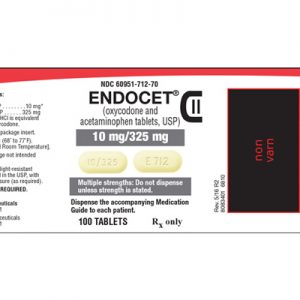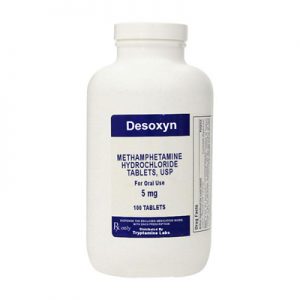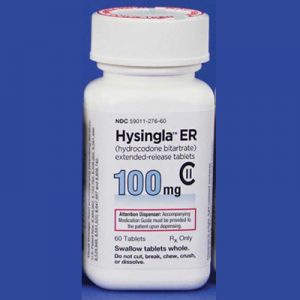Description
WHAT IS DILAUDID 8MG HYDROMORPHONE HYDROCHLORIDE (HCI), AND HOW DOES IT WORK (MECHANISM OF ACTION)?
dilaudid 8mg Hydromorphone hydrochloride (HCI) is an opioid narcotic pain-reliever similar to oxycodone, morphine, methadone, fentanyl, and other opioids. Hydromorphone, like other opioids, stimulates receptors on nerves in the brain to increase the threshold to pain (increasing the amount of stimulation it takes to feel pain) and reduce the perception of pain (the perceived importance of the pain).
Hydromorphone, also known as dihydromorphinone, and sold under the brand name Dilaudid, among others, is a centrally acting pain medication of the opioid class. It is made from morphine. Comparatively, dilaudid 8mg is to morphine as hydrocodone is to codeine – it is a hydrogenated ketone thereof. In medical terms, it is an opioid analgesic, and in legal terms, a narcotic. Hydromorphone is commonly used in the hospital setting, mostly intravenously (IV) because its bioavailability is very low orally, rectally, and intranasally. Sublingual administration (under the tongue) is usually superior to swallowing for bioavailability and effects; however, hydromorphone is bitter and hydrophilic like most opiates, not lipophilic, so it is absorbed poorly and slowly through mouth membranes.
Hydromorphone is much more soluble in water than morphine and, therefore, dilaudid 8mg solutions can be produced to deliver the drug in a smaller volume of water. The hydrochloride salt is soluble in three parts of water, whereas a gram of morphine hydrochloride dissolves in 16 ml of water; for all common purposes, the pure powder for hospital use can be used to produce solutions of virtually arbitrary concentration. When the powder has appeared on the street, this very small volume of powder needed for a dose means that overdoses are likely for those who mistake it for heroin or other powdered narcotics, especially those that have been cut (diluted) prior to consumption.
Very small quantities of hydromorphone are detected in assays of opium on rare occasions; it appears to be produced by the plant under circumstances and by processes which are not understood at this time. A similar process or other metabolic processes in the plant may very well be responsible for the very low quantities of hydrocodone also found on rare occasions in opium and alkaloid mixtures derived from opium. Dihydrocodeine, oxymorphol, oxycodone, oxymorphone, metopon, and possibly other derivatives of morphine and dilaudid 8mg also are found in trace amounts in opium.
WHAT BRAND NAMES ARE AVAILABLE FOR HYDROMORPHONE HCI?
Dilaudid, Dilaudid-5, Dilaudid-HP Injection, and Exalgo are the available brands for hydromorphone hydrochloride.
IS IT AVAILABLE AS A GENERIC DRUG?
Yes, hydromorphone is available as in generic form.
DO I NEED A PRESCRIPTION FOR THIS DRUG?
Yes, you need a prescription from your doctor or other health care professional for this hyromorphone hydrochloride.
WHAT ARE THE USES FOR HYDROMORPHONE HCI?
Hydromorphone is used for management of acute pain and moderate-to-severe chronic pain in patients when use of an opioid is appropriate.
HYDROMORPHONE HCI BLACK BOX WARNING
- Dilaudid-HP Injection should not be confused with other types of Dilaudid injections or other opioids, as overdose and death could result.
- Avoid dosing errors from confusion between mg and mL when dispensing, prescribing, or administering the oral solution. Dosing errors can result in accidental overdose and death.
- Hydromorphone exposes patients to risks of addictions, abuse, and misuse, which can lead to overdose and death.
- Patients should be monitored closely because serious, life-threatening, or fatal respiratory depression may occur.
- Prolonged use of dilaudid 8mg during pregnancy can result in neonatal opioid withdrawal syndrome, which may be life-threatening if not recognized and treated. Pregnant woman should be advised of the risk of neonatal opioid withdrawal syndrome and appropriate treatment should be available.
- Combining opioids with benzodiazepines, alcohol, or other central nervous system (CNS) depressants may result in severe sedation, respiratory depression, coma, and death.
HYDROMORPHONE HCI SIDE EFFECTS
COMMON SIDE EFFECTS
- Lightheadedness
- Dizziness
- Sedation
- Nausea
- Vomiting
- Constipation
- Sweating
- Flushing
- Itching
- Dry mouth
OTHER SERIOUS SIDE EFFECTS
- Other serious and important side effects of hydromorphone are respiratory depression and trouble breathing.
- Since hydromorphone is a controlled narcotic, it carries a box warning of respiratory depression and abuse potential. Use with alcohol or other medications affecting central nervous system can worsen respiratory depression and may lead to death.
WHAT IS THE DOSAGE FOR HYDROMORPHONE, AND HOW SHOULD IT BE TAKEN?
- Immediate-release tablets: Take 2 to 4 mg tablets by mouth every 4 to 6 hours as needed. Increase to 8 mg after careful observation and if needed to control pain.
- Extended-release tablets: Start after discontinuation of all other opioid extended-release tablets. Dosed once-daily, individualized based on prior opioid therapy.
- Injections: Give 1 to 2 mg intramuscularly or subcutaneously every 2 to 3 hours as needed. Give 0.2 to 1 mg intravenously over 2 to 3 minutes every 2 to 3 hours as needed.
- Oral solution: Give 2.5 to 10 mg every 3 to 6 hours as needed.
- Rectal suppository: Insert one 3 mg suppository rectally every 6 to 8 hours OR3 to 6 mg rectally every 3 to 4 hours, when appropriate.
Safe and effective use of dilaudid 8mg in children has not been established.
WHICH DRUGS OR SUPPLEMENTS INTERACT WITH THIS MEDICATION?
Hydromorphone should be used very cautiously with medications that depress the central nervous system (for example, hypnotics, anesthetics, tranquilizers, phenothiazines, and alcohol).
Hydromorphone should be used with caution with mixed agonist/antagonist opioid analgesics (for example, pentazocine, nalbuphine, butorphanol, and buprenorphine) because it may take away the analgesic effect of hydromorphone.
IS IT SAFE TO TAKE THIS DRUG IF I’M PREGNANT OR BREASTFEEDING?
- There are no adequate studies of dilaudid 8mg to determine safe and effective use in pregnant women.
- Low levels of opioid medications may be excreted in breast milk; therefore, it should not be used in nursing mothers.
WHAT ELSE SHOULD I KNOW ABOUT THIS DRUG?
WHAT PREPARATIONS ARE AVAILABLE?
Hydromorphone is available as immediate-release and extended-release tablets, injection, rectal suppository, and oral liquid forms.
- Dilaudid (immediate release tablets): Available in 2 mg, 4 mg, and 8 mg strengths.
- Exalgo (extended-release tablets): Available in 8 mg, 12 mg, 16 mg
- Dilaudid (injection solutions): Available in 1mg/ml, 2 mg/ml, and 4 mg/ml strengths.
- Dilaudid-HP (high potency injections): Available in two strengths: 250 mg powder for solution and 10 mg/ml injection solution.
- Dilaudid-5 (oral solution): Available in 1 mg/ml strength in 473 ml bottle.
- Dilaudid (rectal suppository): Available in 3 mg strength.
HOW SHOULD I KEEP THIS MEDICATION STORED?
- Hydromorphone tablets are stored at room temperature between 20 C to 25 C (68 F to 77 F). dilaudid 8mg oral liquid and injections are stored between 15 C to 30 C (59 F to 86 F). Hydromorphone suppositories are stored in a refrigerator, protected from light.




